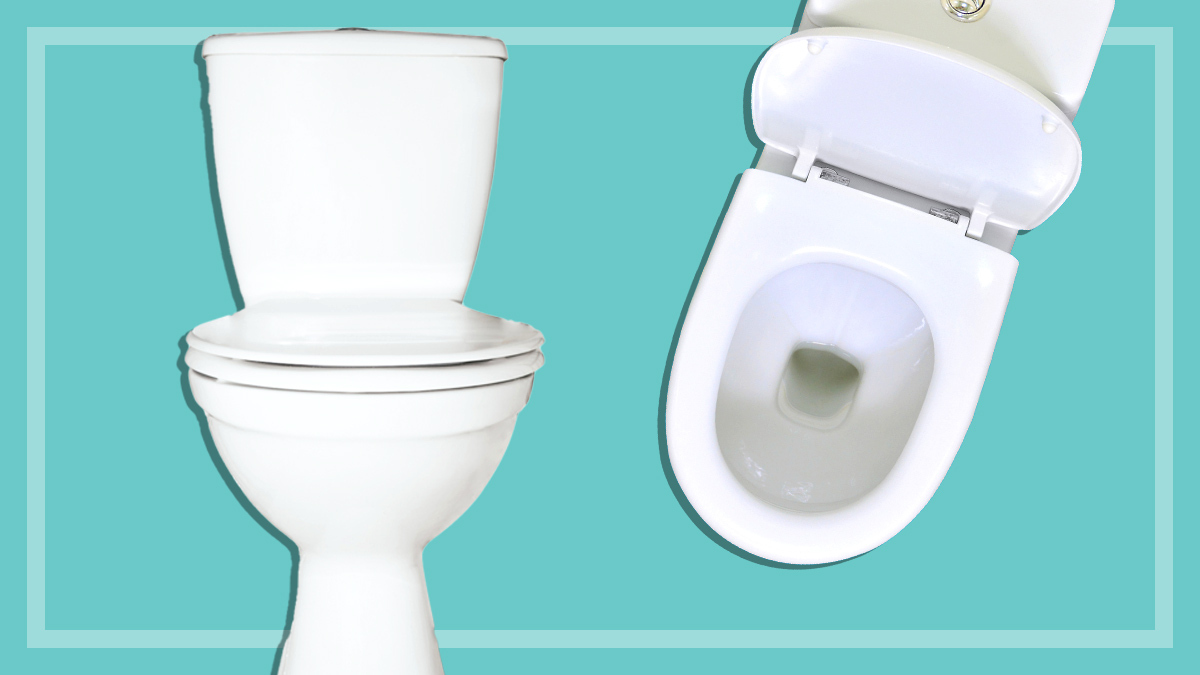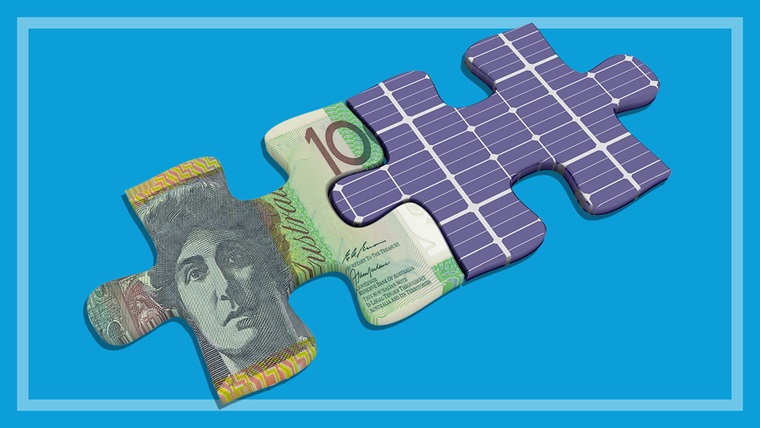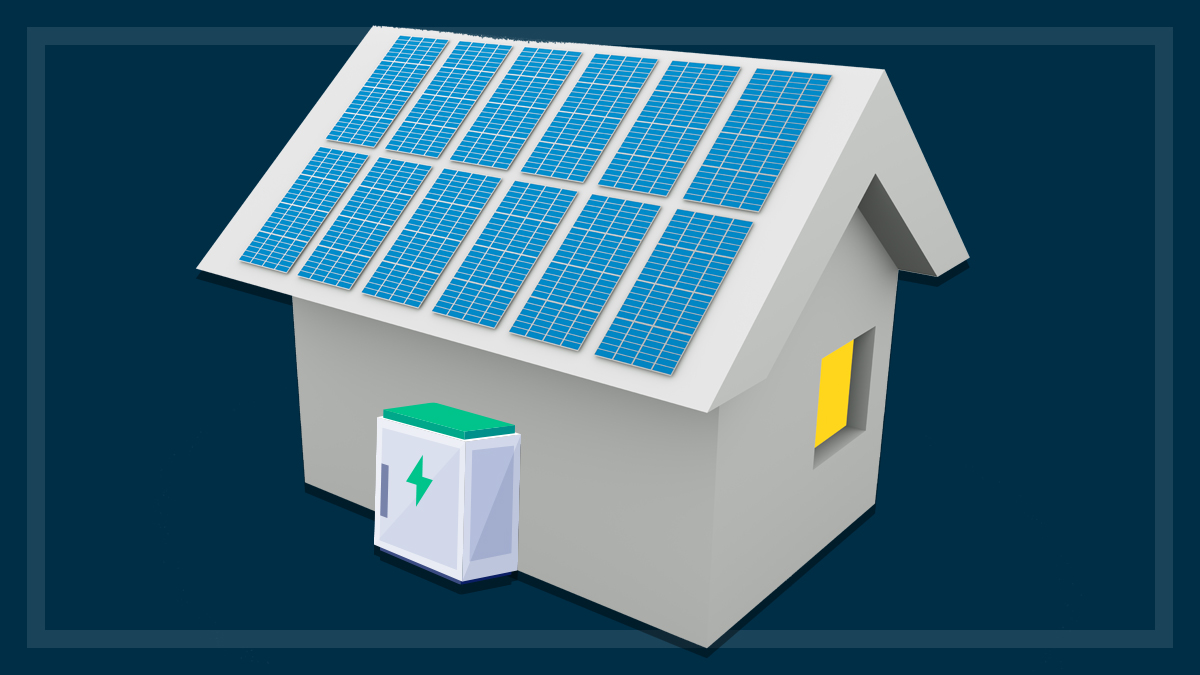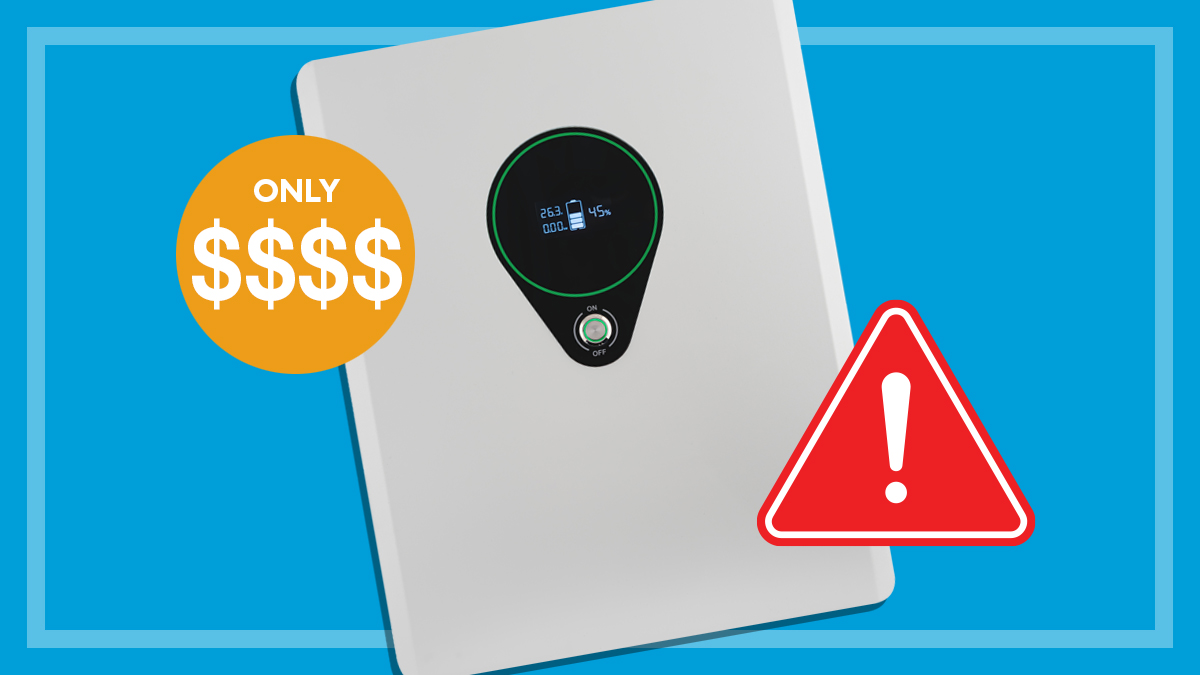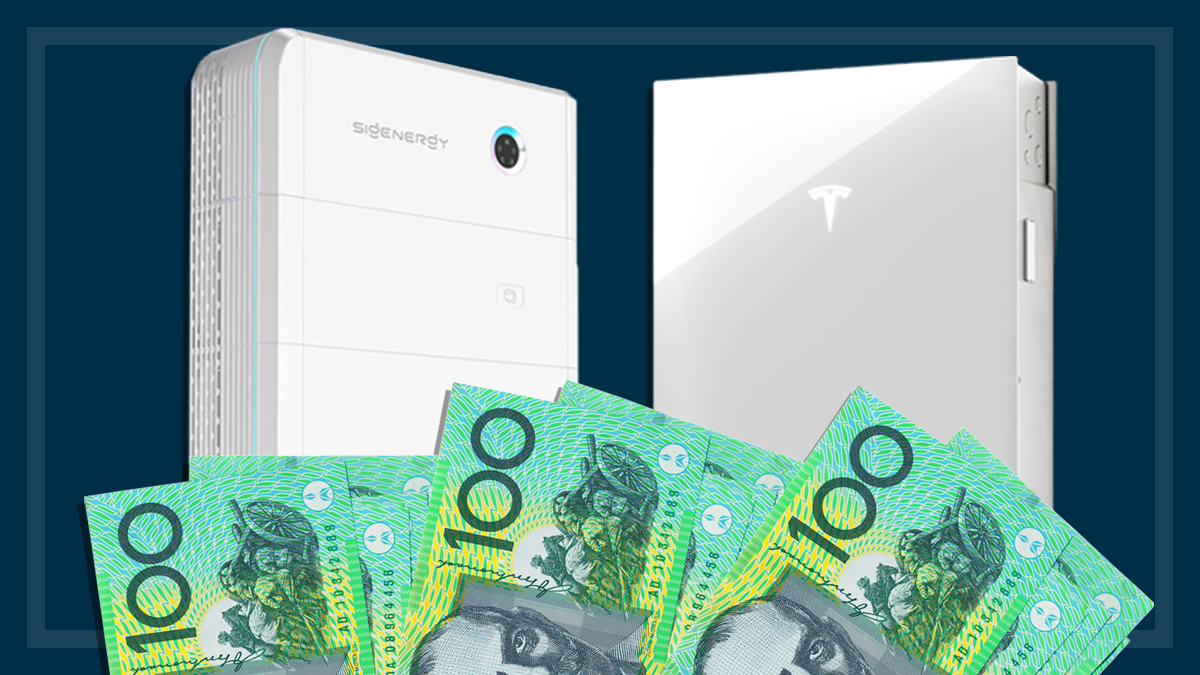Get our independent lab tests, expert reviews and honest advice.
What to know before buying a toilet
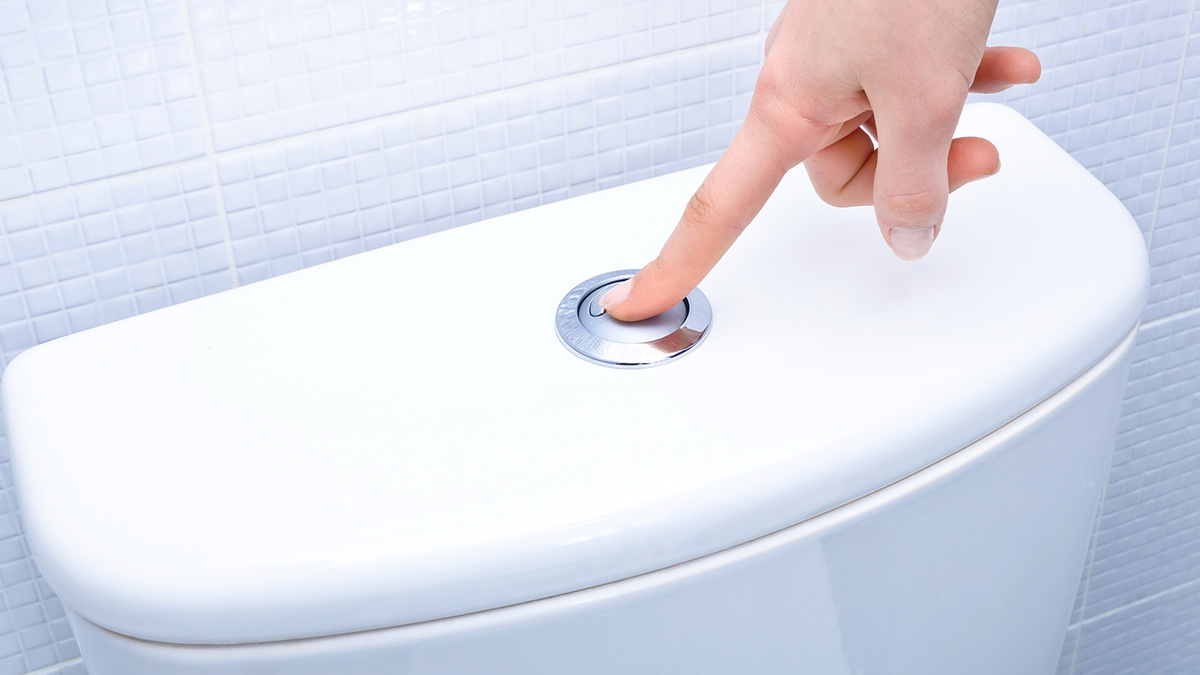
Toilets are common to every home (we hope) and we tend to take them somewhat for granted. But when the time comes to buy a new loo, there’s a daunting range of models available, and the plumbing terminology can be a bit intimidating. Close-coupled? Rimless? P trap vs S trap? What does it all mean?
On this page:
- The typical toilet suite
- Understanding the S trap, P trap and skew trap
- Water inlets
- Toilet designs
- Rimless toilets: Should you get one?
- Water efficiency in toilets
- Toilet seats
- Bidets and smart toilets
Your selection of toilet, whether based on its water usage, design or simply its colour, can affect the cost and installation, so it’s good to have an idea of what you’re in for.
Our guide explains the different types of toilets on the market and their various features so you can choose the right throne for your castle.
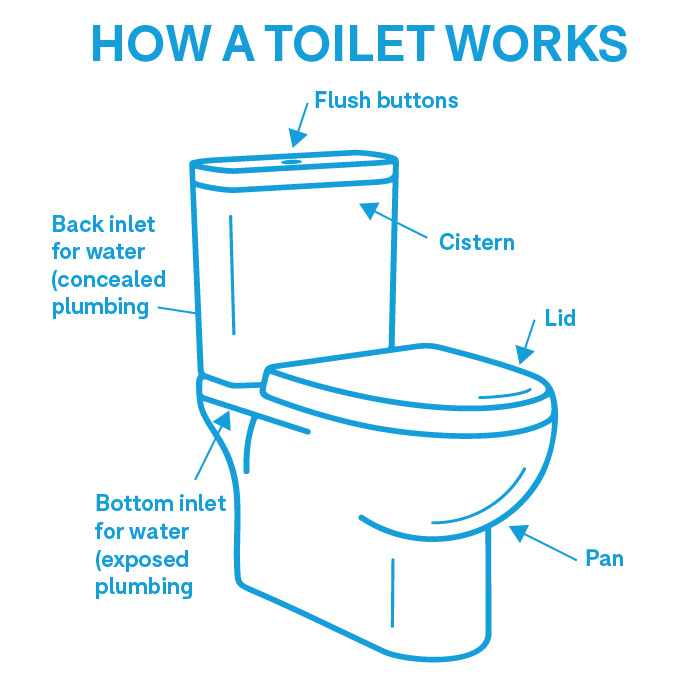
The typical toilet suite
There are two fundamental elements to a toilet suite:
- The cistern, which holds the water for the gravity-driven flush.
- The toilet pan (or bowl), which is the bit you sit on.
When the flush is triggered, the water flows from the cistern into the pan and moves the waste to the sewer line.
Understanding the S trap, P trap and skew trap
The primary difference between types of toilets is where the waste exits the toilet pan – known as the set-out – which is split into different options, depending on the design of your bathroom.
The options are named for their shape, or the bend of the pipe, and all are designed to create a water seal so the sewer smell doesn’t come back up through the toilet.
- An S trap is where the pipe connects to the sewer through the floor. This is the most common set-out in Australia.
- A P trap exits from the back of the toilet and connects to the sewer through the wall. If your toilet is wall hung, it will have a P trap.
- A skew trap exits to either side of the toilet pan – this is the least common set-out, but can be good for tight bathroom designs.
You may not have a choice in the set-out if you’re replacing a toilet, as the previous design will generally guide your selection, unless you’re willing to invest substantially in some bathroom redesign.
Toilet installation measurement requirements
When shopping for a toilet you’ll need the below measurements.
- Set-out: For an S trap it’s the distance from the centre of the waste outlet to the wall. For a P trap it’s the distance from the outlet to the floor. Make sure to also take note of the inlet location that you currently have.
- Projection: This is how far your toilet projects into your space. If you’re replacing a toilet and it projects too far, it might end up blocking a door, cupboard or shower. This is hard to fix after you’ve installed it.
- Height: This is important for people who might have problems getting onto or up from the toilet, or for those who are much taller than average. Most toilets are installed at 39.5cm height, whereas ambulant toilets can be installed from 46–48cm, making it easier for people to use them.
Water inlets
The other main consideration is where the water inlet is – this is how the water gets to the cistern to flush. This will matter if you’re installing a new toilet. Often toilets can cater for either, but if not you might need a plumber to make some changes.
This flexible or copper piping comes from one of two places:
- a bottom inlet is under the cistern, and will have exposed plumbing – you’ll know you have this if you see a tap of some description
- a back inlet comes from the rear of the cistern and will be concealed, which is neater design-wise and requires less cleaning, but it’s recommended you hire a plumber for a back inlet install.
Solenoids and macerators
Some toilets, particularly compact models designed for small spaces or where regular plumbing might be too difficult, use a solenoid inlet. This requires an electrical connection but removes the need for a cistern, thereby saving space. Pressing the flush button activates the water inlet; water is pumped into the bowl to flush it rather than relying on a gravity-fed supply from a cistern.
These models may also have a macerating outlet. The macerator is an electrically powered blade or grinder that reduces solid waste to a fine pulp allowing it to be pumped out through narrower discharge pipes than usual. Again, this can be useful for installations in areas where standard toilet plumbing is too difficult.
An illustration of the different waste exit design options for toilets.
Toilet designs
The toilet suite design found in most homes is one where you can see the S trap or P trap. This pipeware can often be a pain to clean. To solve that issue some more recent designs have joined the cistern and toilet pan into one unit, and others have eliminated the cistern from view completely (though not its existence, of course).
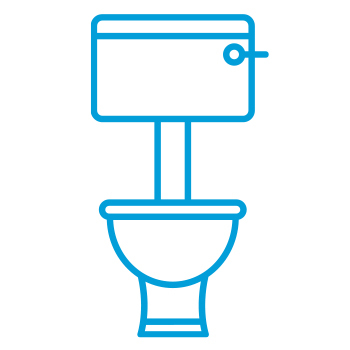
Link or connector toilets
One of the most commonly found toilet suites comes in two parts – the cistern and the toilet pan – which are connected with a pipe. These are easy to install, and are also the cheapest. Some have connector options that cover the pipeware.
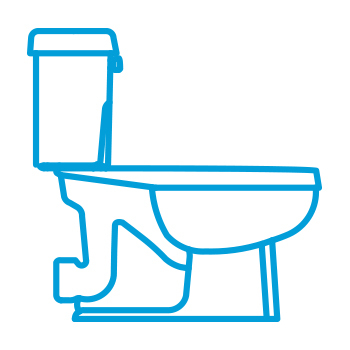
Close coupled toilets
The close coupled toilet design has no gap between the cistern and toilet pan – the cistern sits directly on the toilet pan. It looks neater than the plastic connector in link toilet suites, but you’ll still have to clean the trap pipeware at the back.

Back to wall toilets
Back to wall toilets are considered the next step up, budget-wise. As well as eliminating any gap between the cistern and toilet pan, this toilet type also sits flush with the wall so there’s no need to clean behind the toilet for dust.
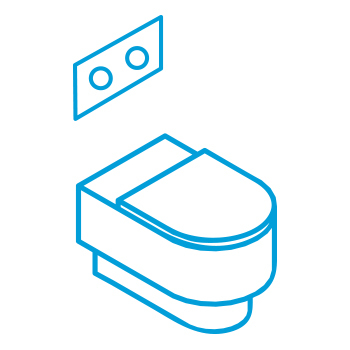
Concealed cistern toilets
This covers a variety of designs, but the common factor is that the cistern is concealed, generally behind a wall or cabinet.
The flush buttons are usually located vertically above the toilet pan, within an access panel on the wall or cabinetry. If a problem develops with the cistern, the plumber can gain access through this panel.
The flush buttons are available in different configurations and can even be placed some distance from the toilet, allowing for a more innovative bathroom design.
The toilet pan can be floor-mounted or wall-hung so you have clearance under the pan. Wall-hung pans can be useful for installing at a non-standard height (for example, they can be set higher to accommodate taller people) but they’re only suitable for P trap set-outs.
Also, since the pan and cistern generally don’t come as a matched set, you need to make sure that the cistern you choose will work correctly with the pan.
Rimless toilets: Should you get one?
Most toilets have a rim around the top edge of the pan (that the seat is positioned on). Cleaning under the rim is essential for removing any nasties that you can’t see, but new rimless toilets have made this irrelevant – for a price.
Rimless toilets are exactly what you would think: there’s no rim, so the interior of the toilet bowl is all one visible surface, and a simple sponge can clean everything. The design of rimless toilets means no splashing. They’re a fairly recent phenomenon in Australia and the theory is that since you can see the entire inside surface of the bowl, it means you only need to use a limited amount of toilet cleaner without spurting a whole bottle of it under the rim ‘just in case’.
While aesthetically some people might appreciate a rimless design, we prefer its claim of being easier to clean. Fewer chemicals down your toilet and into the wastewater system is a good thing. If you can afford the extra cost – and it really depends on the brand you’re buying – then it may well be worth it.
Water efficiency in toilets
Every toilet should have a WELS (water efficiency labelling standard) star rating, introduced by the Australian government in 2005. In a largely dry country like Australia, water efficiency is important.
The star rating lets you easily compare water usage between toilets. The higher the star rating, the more water-efficient the toilet.
Ratings are based on the number of litres used for four half flushes combined with the number of litres for one full flush. All toilets sold in Australia must have both half and full flush options, and all toilets must be registered for WELS.
If building or renovating, there are minimum star rating requirements you must adhere to. The current requirements are typically:
- toilets installed in new homes must have at least a four-star rating
- toilets installed as a replacement, or as part of a home renovation, must have at least a three-star rating.
Different rules may apply depending on your local jurisdiction.
The higher the rating, the more water you’ll save, and the more money you’ll save on your water bill.
Toilet seats
The main design change for toilet seats in recent times has been the soft-closing lid. The slamming of a standard toilet lid at 3am is not something most people particularly appreciate, especially if you plan on getting back to sleep, so soft-close lids are a welcome development.
Since they close more gently and have less impact on the toilet pan, they’re also less likely to cause damage over time.
Other new options include quick-release toilet seats. These have a simple mechanism to remove the seat for cleaning, rather than having to use a tool to remove it from the toilet pan.
Bidets and smart toilets
Although European and American bidets often sit as separate units to the toilet, bidets can be added as an optional extra onto an existing toilet. While many models don’t require much plumbing expertise, it’s always best to get an expert to install anything that interacts with your water supply.
The basic add-on attachments to existing toilet seats usually just require a split from your inlet hose in order to supply water for the bidet, and they come with an adaptor and some simple instructions. Other types replace the seat entirely and require power.
Designs can range from a simple manual switch to activate a gush of water straight from the inlet valve, through to smart toilets which incorporate varied temperature and pressure of water and toilet seat warming (great for winter nights). Some even incorporate LED lights.
Bidet prices tend to start from $90 and can cost thousands.

